 |
 |
 |
 |
 |
 |
 |
 |
 |
 |
 |
 |
 |
 |
 |
 |
 |
 |
 |
 |
 |
 |
 |
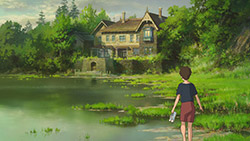 |
 |
 |
 |
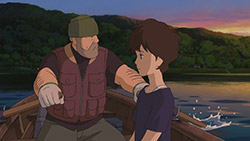 |
 |
 |
 |
 |
 |
 |
 |
 |
 |
 |
 |
 |
 |
 |
 |
 |
 |
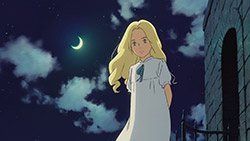 |
 |
 |
 |
 |
 |
 |
 |
 |
 |
 |
 |
 |
 |
 |
 |
 |
 |
 |
 |
 |
 |
 |
 |
 |
 |
 |
 |
 |
 |
 |
 |
 |
 |
 |
 |
 |
 |
 |
 |
 |
 |
 |
 |
 |
 |
 |
 |
 |
 |
 |
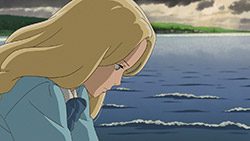 |
 |
 |
 |
 |
 |
 |
 |
 |
 |
 |
 |
 |
 |
 |
 |
 |
 |
 |
 |
 |
 |
 |
 |
 |
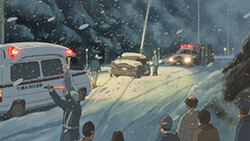 |
 |
 |
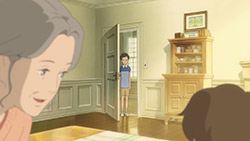 |
 |
 |
 |
 |
 |
 |
 |
 |
 |
 |
 |
“When Marnie Was There”The Last Ghibli Film?: I recently had the pleasure of going to my local independent cinema that was screening When Marnie Was There, even though it was originally released in Japan nearly two years ago. I thought I’d missed the opportunity to see it on the big screen, but I’m glad things worked out the way they did because I wouldn’t have wanted to experience this any other way. It only then dawned on me that I’ve never seen a Ghibli film on the big screen before – in fact, I’ve only ever seen one anime in the cinema, and that’s Pokemon: The First Movie – so overall it was a fulfilling experience, albeit a sad one. It’s dispiriting to think this could be the last Ghibli film to grace our screens, and I couldn’t help but be reminded of that likely fact throughout watching it. But at the very least we ended with one of the studio’s best to date. The level of detail put into every frame once again proves that Studio Ghibli are among the best of the best in the industry – from the painted backgrounds to the ever fluid animation, or the powerful soundtrack to the blossoming friendship between Anna and Marnie; everything here is spot on. It may not be as otherworldly as other Studio Ghibli titles, but there was certainly that magic touch that can be felt in their best works. And for me, I’d rank this among their very best; up there with the likes of Nausicaa of the Valley of the Wind, Grave of the Fireflies, and Only Yesterday. It must be said that director and scriptwriter Yonebayashi Hiromasa did a stellar job here, improving upon his directorial debut with The Secret World of Arrietty. His recent interview about women directors at Ghibli that’s making the rounds is unfortunate, and his gender stereotyping is more than likely a result of his culture being different from our own. Though it should not be forgotten that Studio Ghibli has hired several talented women over the years, and one man’s opinion doesn’t serve as an explanation for the entire company. I do think it’s fair to question why no women have been involved in a directorial position, but the fact remains that Miyazaki’s works have almost always featured relatable and fully realised young girls at the forefront. Anime has an abundance of female characters that feel like they’ve been put together in the Trope Machine to please niche demographics who wish for girls with a certain character trait, voice actress, hairstyle, body type, breast size, or stocking length. But from Nausicaa to Marnie and everyone in between, the studio’s history of writing stories of fully realised girls is pretty much perfect. And because of that, When Marnie Was There feels every bit like a Ghibli classic, allowing us into the personal story of a young girl – or in this case, two young girls – whose relatable struggles intertwine with the fantastical storytelling we’ve come to expect from such talented directors, producers, screenwriters, and animators. Anna and Marnie: It’s fair to say Anna and Marnie’s struggles and their flourishing relationship is the centrepiece of the film. Their contrasts complement one another – both their strengths and their flaws – in the best way possible, and it’s a miracle that such a quick relationship felt natural. It seemed like they were smitten with one another from the moment they laid eyes upon one another. With that ending in mind, it’s clear that Marnie was one of the few people Anna could open up to as she did. They’re both at that awkward age between being a child and a teenager where emotions are high, and both find themselves in unfair circumstances, so them finding escape in one another feels like the most logical thing in the world. And the result is pure magic. The colours seemed to burst off the screen whenever the pair shared a scene together, and their level of intimacy made their bond feel even more important. Funnily enough, my date thought this was going to turn into a straight-up lesbian romance, and I confess that some parts seemed to cross that line. Yet all those blushes, intimate embraces, and confessions of love ended up more familial than romantic. It could have been another From Up On Poppy Hill situation, but thankfully that wasn’t the case. I must confess that my initial impressions of Anna were that she looked rather bland and expressionless compared to other standout protagonists we’ve seen from the studio before, but it quickly became clear that was intentional. Once we had established her depression, social anxiety, and her struggles with her foster parent, her blank expressions seemed perfectly fitting. And that meant that whenever she did have an outburst or show she truly cared about something, it felt even more vital than it perhaps would have otherwise. I’ve noticed certain critics felt that initial set-up was abandoned midway through the film, but my take is her natural progression allowed her to open up and accept what it was that brought her down. By the end, everything with her foster parent was resolved and her smiles finally felt genuine. The Grand Reveal: I appreciated the mystery of Marnie right up until the big reveal. I kept running the possibilities through my head: Is she a figment of Anna’s imagination? Is she an imaginary friend? Is she the vision of her doll come to life? Did Anna used to live in that house when she was younger? Or perhaps Marnie is actually real? There were parts where things seemed to get muddled, but it all worked out in the end. It was painful to watch Marnie’s life flash by in a few minutes, and the fact that all the events Anna experienced actually did happen is when the wave of emotions hit, followed by Marnie marrying the boy who Anna felt jealous of. And that’s when it became clear that Marnie was Anna’s own grandmother, and Anna losing her parents made sense with the timeline of events we’d known until that point. The death of Anna’s mother and Marnie’s daughter was painful but at the same time beautiful, as was the short scene with the old Marnie caring for the young Anna. By the end, all the pieces of the puzzle fitted together perfectly, and I can’t think how the final minutes could have been any better than they were. Overview – Final Impressions: The final wave between Marnie and Anna was when I started to tear up. The only other Ghibli films to make me cry were my personal favourites: Only Yesterday and Grave of the Fireflies. Including Marnie, all three delivered a resolution that sent my emotions into overdrive. Only Yesterday’s final scene on the train is perhaps my favourite ending of any film I’ve watched, and Grave of the Fireflies was heartbreaking throughout. In comparison, Marnie’s ending is more tame, but it was about as perfect as it could possibly be, which was enough to cement this as one of my all-time favourites from the studio. It’s not overly devastating, but Anna’s journey and the mystery of Marnie’s existence made this compelling from start to finish. I never usually sit through the credits of a movie, but I had to this time, knowing this could be the last time I ever have such a luxury with a Studio Ghibli film. If this is the send-off we’re getting then I’m perfectly content with it. But I truly hope this isn’t the final goodbye. ED Sequence
ED: 「Fine on the Outside」 by Priscilla Ahn |








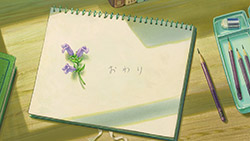
Thanks for reviewing this, Samu. This is one of faves of Studio Ghibli.
My personal favourite and what I thought was the most touching scene was when Marnie asked for Anna’s forgiveness:
https://randomc.net/image/Omoide%20no%20Marnie/Omoide%20no%20Marnie%20-%2001%20-%20Large%20111.jpg
I really enjoyed this movie; Ghibli has a knack for “getting it right”, IMHO.
It’s been some time since I watched, but I remember really getting caught by
the characters and almost empathize with their story (even though Ima guy).
Although, I never got any yuri from their friendship, either; just a lot of heart.
Wonderful story telling, thank you for covering!
why is there a “01” after the title?
There shouldn’t be =X Good catch!
I am with you, i was also wonder where marnie would fit in Anne’s “mind”, until this scene here
https://randomc.net/image/Omoide%20no%20Marnie/Omoide%20no%20Marnie%20-%2001%20-%20Large%20102.jpg
i began to speculate that she is older and see Anna for another person. As if Anna are stepping in memories of her and take the role of this guy, at some point. But Marnie do realized Anna. Well, at the end also my emotions was shaken in a good way, and i was thinking to show this film to my niece. because she has very similar cases like Anna in the beginning with others.
Frankly, I feel that she should have report about the abusive maids.
Thanks for reviewing, we felt the same. My wife and I were able to see it in theater… 9 months ago or so. A little slow but an excellent, beautiful film.
For any who do not already know this, Marnie is one of the reasons for Ghibli’s shutdown; it is essentially the worst performing Ghibli at the box office ever.
I am unsure if it is just because it was slow or if it is the Japanese poverty, particularly among the young.
It’s a pity the box office was so poor (relatively speaking) for a Ghibli film.
It’s a very special film, however I feel as though it will fly over the heads of many at a relatability perspective. The target audience is arguably very very small. It is specifically aimed at a demographic of, in particular, women who went through a similar experience and can reminisce the moment. It becomes harder for those who have been more grounded in reality even at a younger age group. Despite being part of that latter group, I witnessed a similar case occur in a close friend in my former years, hence it felt like a very accurate and vivid expression of the confusion that embodies these particular people at those particular times.
A master-class in how to express an intangible, immeasurable and confusing period of some individual’s lives. I felt the movie was much more about how it feels rather than what is happening/what is the explanation of these situations. You can pretty much always remain one step ahead of the plot and the upcoming plot twists but it doesn’t matter. It’s about the experience.
Comparisons to Inside Out will, inevitably, be made. Both were nominated for the Academy award for best animated work. Both explore simple narratives of the confusion and rationale of young women growing through periods of significant change in their lives. However the approach is very different between the two. Inside Out is a brilliant metaphorical explanation of the decision making processes and the outcomes that they cause; catering to a younger audience with bright and fun art, music and characters. Omoide no Marnie focuses on that border between reality and imagination; being more serious in tone and throws you into the sensation of being lost and confused then showing you how this affects a person in the real world.
I was pretty grumpy that Inside Out won the academy award as Omoide no Marnie feels like a more complete and accomplished film, but ultimately doesn’t support the criteria for the award. The narrative, whilst simple is somewhat foreign and difficult to relate with on a mass scale. Even those who understand it but do not relate on a personal level will find the movie ‘slow’ as you await the next big plot reveal.
Unfortunate to say the least, but either way, we’re treated to a very special experience; and I can’t emphasise that any more. It’s an experience. Savour it.
what happens to ghibli after miyazaki’s death ?
Disney buys it for $4 billion ?